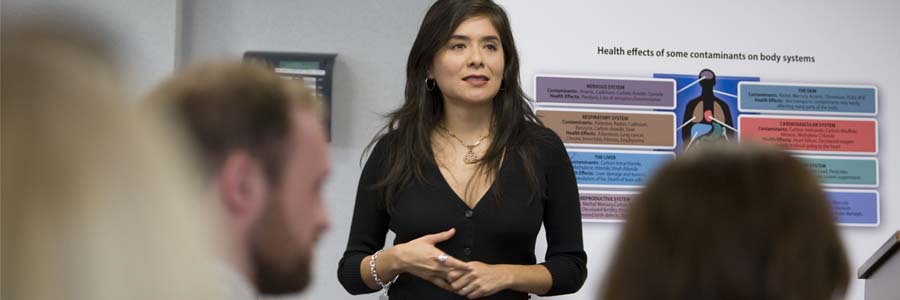You are reading the Original Version (CLB5+) Read Simple Version (CLB3-4) You’ve probably read 5 steps to an engaging presentation but are still anxious about presenting to a group. Don’t worry, we’ve got you! Here are more tips to help you out: The best way to relieve anxiety is to accept that it is normal. Everybody gets nervous especially when it comes to public speaking. It’s actually not a bad thing. When we’re under pressure, our body releases hormones including adrenaline (a hormone that boosts energy) to help us cope. This can fuel greater physical and mental alertness. However, too much adrenaline can take over. It can make us speak too fast, have a higher voice pitch, or show fidgety movements. If this happens to you, you can work through it by breathing deeply, walking, or making small movements (like shaking your hands, for example). Some find it helpful to meditate before a presentation. Try these out and find out what works best for you. On the day of the presentation itself, you can relieve your anxiety by doing the following: If all else fails and you’re still nervous, remember this age-old tip: Imagine everyone naked. It just might work! As mentioned, we tend to talk too fast when nervous. This can also happen when you’re worried about your English. Talking too fast will make it hard for the audience to understand you. To prevent this, practice enunciating your words fully. Pause at important points for emphasis. Don’t forget to breathe! Make sure to project your voice well, or use a microphone so that everyone in the room will hear you clearly. Don’t depend on your slide presentation too much. The audience should pay more attention to you. Have you ever been to a presentation where the speaker kept asking their assistant to go back to a slide? It’s annoying! You could lose the attention of your audience this way. Instead, engage your audience by making eye contact, talking to them directly, and asking questions. Use personal stories. Turn your presentation into a conversation. Ideally, presentations (not workshops or trainings) should be within 15-20 minutes. Keep it tight to accommodate limited attention spans. If your presentation is data-driven, make sure to summarize the main findings in your talk. A detailed explanation of graphs and charts may not be necessary unless it’s the kind of conference where it is expected – for example a scientific symposium or sales conference. Print the graphs and charts as handouts so participants can study them later. Make the most important points of your presentation memorable. Share a personal anecdote, use compelling visuals on your slides, or make an acronym. Emphasize your message by sharing it again towards the end of your talk. You can either give them 3-5 things to remember, or summarize your main point in 15 words. Losing one’s train of thought is one of a public speaker’s biggest fears. But it’s not as catastrophic as you think! There are several ways to handle the situation without making it a big deal. You can: A mistake can endear you to the audience as it makes you more relatable. So just relax and don’t aim to be perfect. Now stop worrying about your presentation. You’ll do great! Do you want to be a master at presentation or public speaking? Join your local Toastmasters Club. Join our weekly Coffee Chats – Speaking to practice your conversational English. It is offered Mondays and Fridays at 10 am. Please login to tell us what you think.Skip to:
Relieving presentation anxiety
Delivery tips
Message tips
What if you forget?
Article updated January 9, 2024.
Sources: 20 world-class presentation experts share their top tips, Mark Fidelman, Forbes; 9 helpful tips to calm your nerves before speaking, Marcel Schwantes, Inc.; and How to prevent and recover from mind blanks, Olivia Mitchell, Speaking about presenting.com. Accessed January 9, 2020.Community Resources
We'd love to hear from you!



